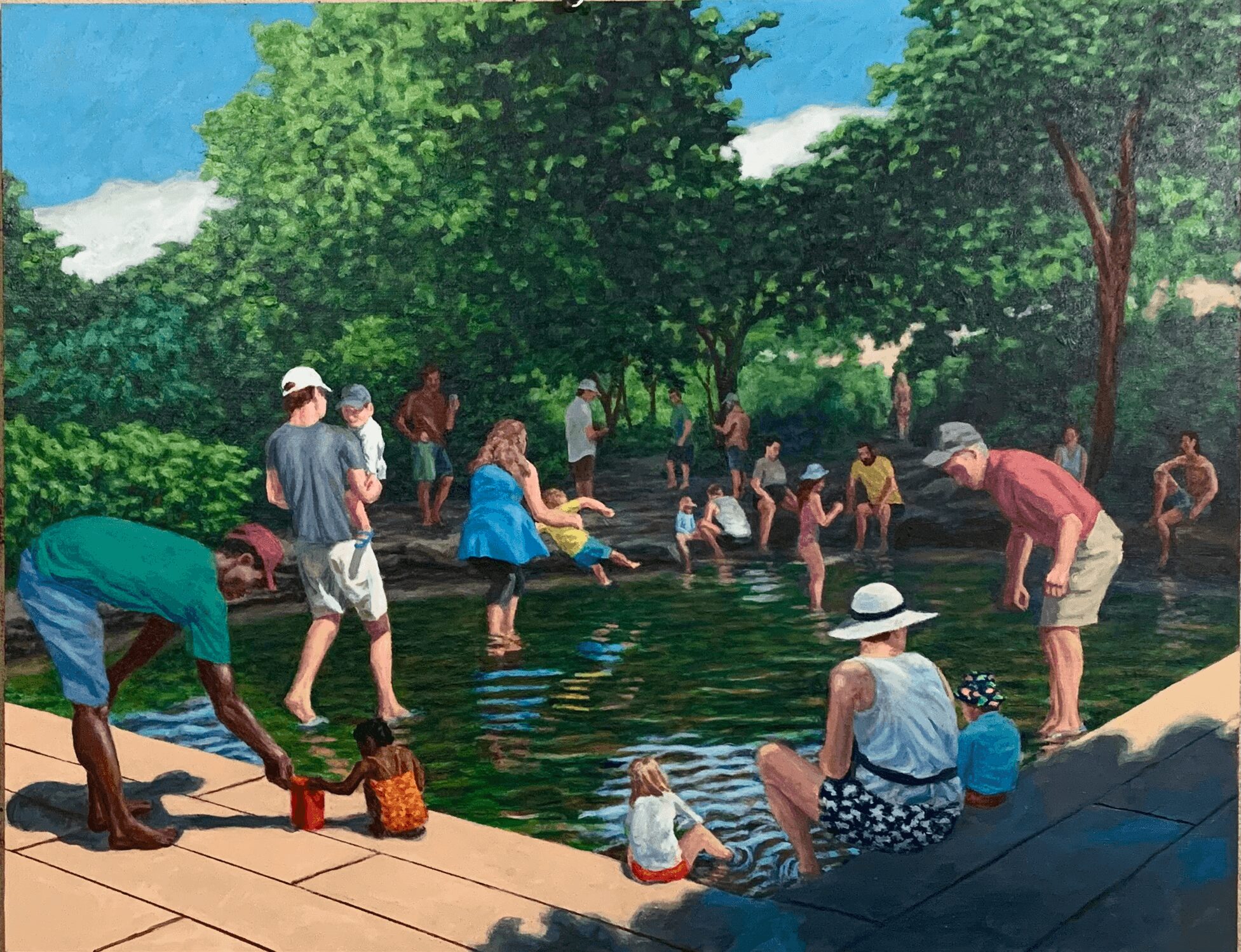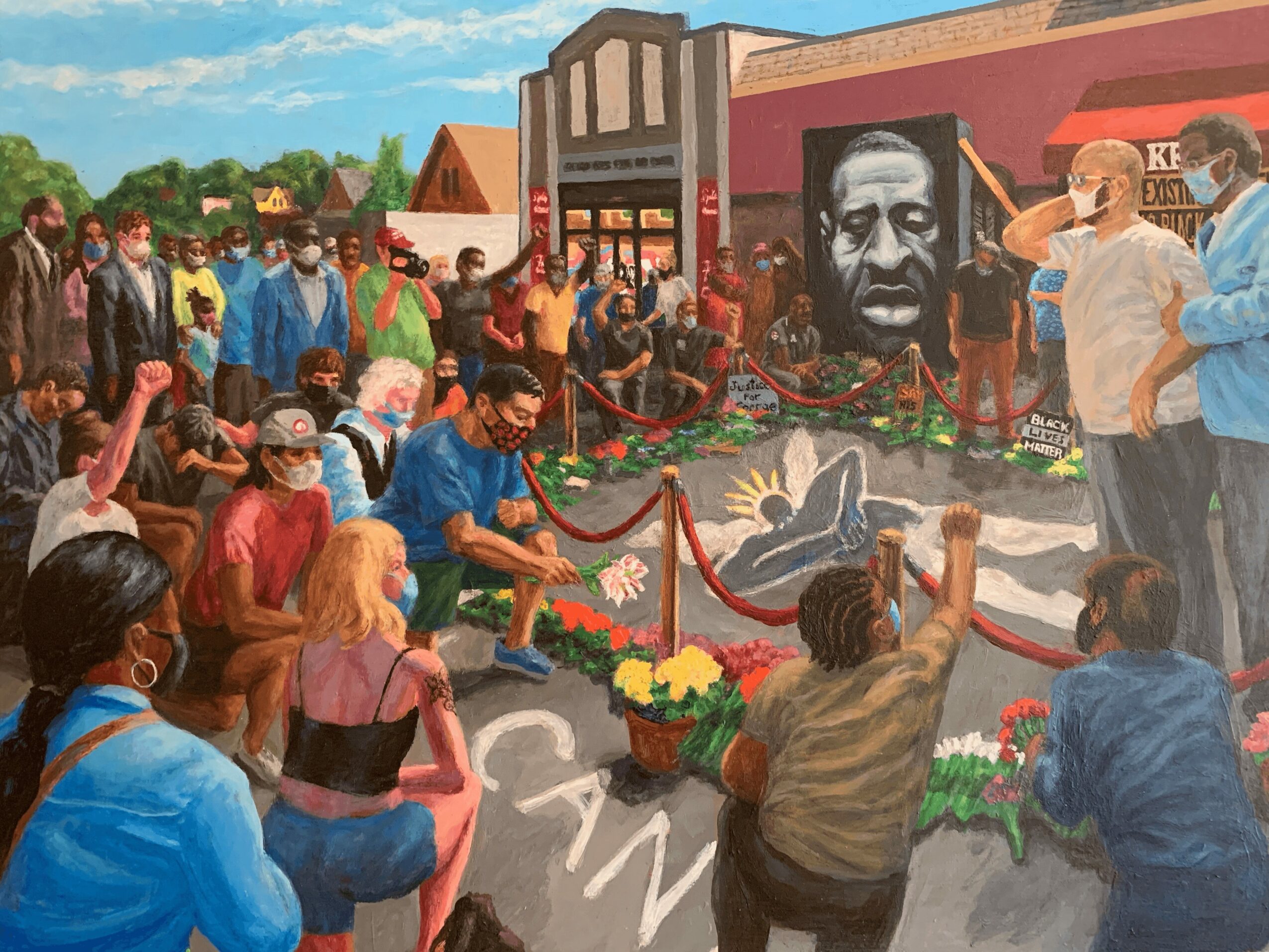
Today we’d like to introduce you to David A. Amdur
Hi David A., please kick things off for us with an introduction to yourself and your story.
This goes way back: I grew up in the ‘60s, when many folks were searching for meaning. As a teenager, I was drawn to the arts as ways to discover deeper understanding of the world and what it means to be human. I made light sculptures, produced light shows and experimented with performance art. But, I didn’t paint or draw because I didn’t think I had a talent for it. In college, I took courses in literature and philosophy, but decided to try an art class because I thought it offered more direct experience. My prof was an abstract artist, and initially I pursued that direction. But in a later class my prof, Vic Caglioti, challenged me to try drawing and painting from life, and I found it exhilarating to find beautiful relationships of color and form in the world around me. I threw myself into painting and became an art major.
After college, I did carpentry and house painting for several years to support myself as an artist. In the early ‘80s, I was painting in the south of Mexico, when I heard reports of the atrocities that were happening just to the south in Guatemala and El Salvador. In response, I decided to make paintings about them. But, soon I felt the need for more education in how to tell a compelling story with paint.
It was hard to find a graduate program where I could learn more of the nuts and bolts of painting people in action. After evaluating many programs, I chose Queens College of the City University of New York. The painters I studied with there, including Rosemarie Beck, Gabriel Laderman, and Robert Birmelin, had the courage to row against the predominant tide of abstraction at mid-century to create truly original figure painting, informed by tradition but not academic. After completing my MFA, I still felt my technical skills wanting, so I secured an Andy Warhol scholarship for an additional year of study at The New York Academy of Art, for rigorous study of figure drawing.
I taught art in public and private schools for fifteen years and taught some college courses. I taught a course in the History of Art and Design for the Graphic Design program at Brown College, then taught courses in design, and was brought on full time and eventually was designated as a Professor. In 2006, I didn’t have much time for painting because I kept busy writing a textbook entitled Typographic Design in the Digital Studio.
Would you say it’s been a smooth road, and if not what are some of the biggest challenges you’ve faced along the way?
My tenure at Brown came to an end with the recession of 2008. The College massively downsized and I was among the 28 faculty to be laid off.
Being unemployed in my mid-fifties during the recession was no joke. But, after evaluating my skill set and doing several informational interviews, I decided to leverage my experience in education and writing to transition into workplace learning and performance improvement. For the next ten years I had to set my artwork aside. I spent all available time networking and learning about the field through professional organizations, or working on contracts. I found the work interesting, but after this sojourn, I was glad to retire and get back to painting.
Over the years I’ve had ten solo and two person exhibitions of my work. and I have participated in a couple dozen group shows. I haven’t made big bucks, but have had a lot of satisfaction. I don’t make as many paintings about harsh topical subjects as I used to, but continue to explore human relations in a more nuanced way in most of my paintings.
As you know, we’re big fans of you and your work. For our readers who might not be as familiar what can you tell them about what you do?
Most of my paintings are centered on human interaction, which I’ve explored in series depicting people engaging with nature, at festivals, in social and political actions, at play, and making music. They aren’t overly flamboyant, clamoring for a moment of attention. I try to make paintings that you can live with— that reward repeated viewing.
They are realistic, but while I feel keen responsibility about how I represent my subjects, that’s not enough in itself. A good painting is a lot like a musical composition. It builds dramatic force through contrasts and harmonies. But instead of tones and rhythms, a painting’s elements are colors, shapes and space. I often think a piece of music leads me on a journey— paintings do that too. A painting can be configured so that when you’re looking at a particular part, another part struggles for attention. And then, something else tugs at your eyes, then another, and so on. This creates energy in the experience of looking. In addition, clear presence of color is very important to me. Color should impress itself upon the eyes with the same kind of immediacy as scent which fills the nose.
What do you like and dislike about the city?
I love that the Twin Cities has so many green spaces, lakes, creeks and the river right in town, I love kayaking and cross-country skiing. The cultural life is richer than most cities—I particularly enjoy the jazz scene.
I think the biggest problem the Cities have is lack of affordable housing. That pressure stiffles people’s creativity and sense of well-being.
Pricing:
- Standard price for 18″ x 14″ painting is $900
- Standard price for 8″ x 1o” landscape painting is $450
Contact Info:
- Website: https://bit.ly/amdur-art
- Instagram: https://www.instagram.com/davidamdur3/?hl=en



















